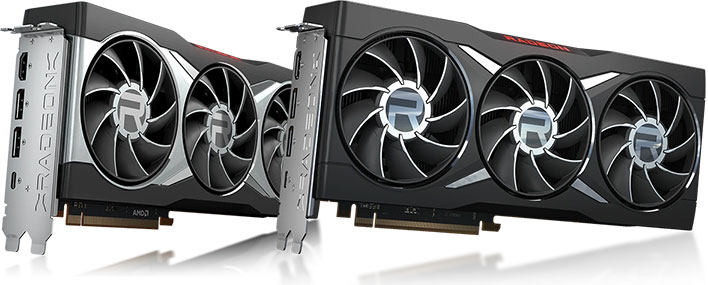AMD Denies Favoring Miners Over Gamers For Radeon Cards, Claims Supply Will Improve Soon

It has been a frustratingly long time since graphics cards were routinely in stock and selling at or near MSRP. This is largely a two-part problem, consisting of (A) a global shortage of silicon, and (B) cryptocurrency miners snapping up stock. Scalpers aren't making things any better either, though if not for the other factors, they wouldn't have much luck hawking GPUs at insane markups. During a recent webcast at the Deutsche Bank of 2021 Technology Conference, AMD CFO Devinder Kumar touched on both points.
AMD is doing well for itself these days, and now routinely posts strong financial results each quarter. In its most recent quarter, for example, AMD saw a 99 percent year-over-year increase in revenue to $3.85 billion, and a massive 352 percent year-over-year jump in profit, to $710 million. This was driven in part by its Computing and Graphics segment, despite and industry-wide shortage of silicon that contributing to the difficulty in actually obtaining a graphics card.
To that end, specific SKUs designed specifically for cryptocurrency mining are supposed to help, though it is a delicate balancing act—the more GPUs that are allocated for mining cards, the less there are for gaming SKUs. Regardless, AMD has seen an uptick in graphics revenue. When asked what is driving that growth, and specifically the impact cryptocurrency mining might be having on AMD's bottom line, Kumar said crypto sales have been "negligible."
"That's not a priority for us. We do not prioritize our product or make them for the crypto folks, it is more for the gamers and that's a high priority from that standpoint. What's driven the growth, as you know, we had the Radeon 6000 series high-end GPUs introduced very competitive and that is driving the growth in the GPU space.
Kumar also pointed to its server-based CNDA 2 products as a driver of revenue in the graphics space, and noted that higher-end gaming and premium consumer products "command better ASPs [average selling prices]," resulting in better profit margins. So the motivation exists to prioritize those segments over crytpo sales.
The comments come on the heels of a recent leak purporting to show an unlabeled RDNA 2-based graphics card for mining from XFX, with 10GB of GDDR6 memory and a 39MH/s hash rate. Its specs do not match any current desktop Radeon RX 6000 series, but appear to be in line with the Radeon RX 6700M.
In addition, some people speculated that the gap in GeForce versus Radeon ownership as represented in Steam's hardware surveys indicates AMD is selling more cards to miners than gamers. Then a couple of weeks ago, a user on Reddit posted a short YouTube video showing columns of Sapphire, PowerColor, and XFX branded Radeon cards being sold directly to crypto miners.
It is also worth noting that AMD has refused to bake in any sort of hash rate limiter on its Radeon RX 6000 series. Even so, AMD insists that actual gamers are the priority (as well as data center customers), not miners.
AMD Is Hopeful The Supply Shortage Will Ease Up A Bit In 2022
The other factor in all this is the supply shortage. In some respects, this has eased a bit, at least on the CPU side. Looking back, the Ryzen 9 5950X and Ryzen 9 5900X were both routinely out of stock when they launched, but are now much easier to find, and even at lower prices than MSRP.
On that topic, Kumar said "from a supply standpoint, it's become more fortified right now," and credited it with an uptick in supply on AMD's revenue growth. He also sees things improving in the not-too-distant future.
"As there has been the realization that this demand is for real and there are customers demanding the technology and the products in particular where the competitiveness of the products is there, it continues to get better and even from our standpoint, as we get to 2022 and look at all partners across the board, the supply situation continues to get better," Kumar said.
Companies like Intel and TSMC have warned that the supply shortage could last throughout 2022 and even stretch into 2023. Kumar's comments aren't necessarily at odds with those predictions, and instead it sounds as though he believes the situation will improve in the coming months and into next year, as opposed to being resolved outright.
Here's hoping he is correct, especially as it pertains to GPUs. And that is really all we can do, as consumers—wait, see, and hope. In the meantime, you can check out the full AMD webcast if you have around 35 minutes to spare.

